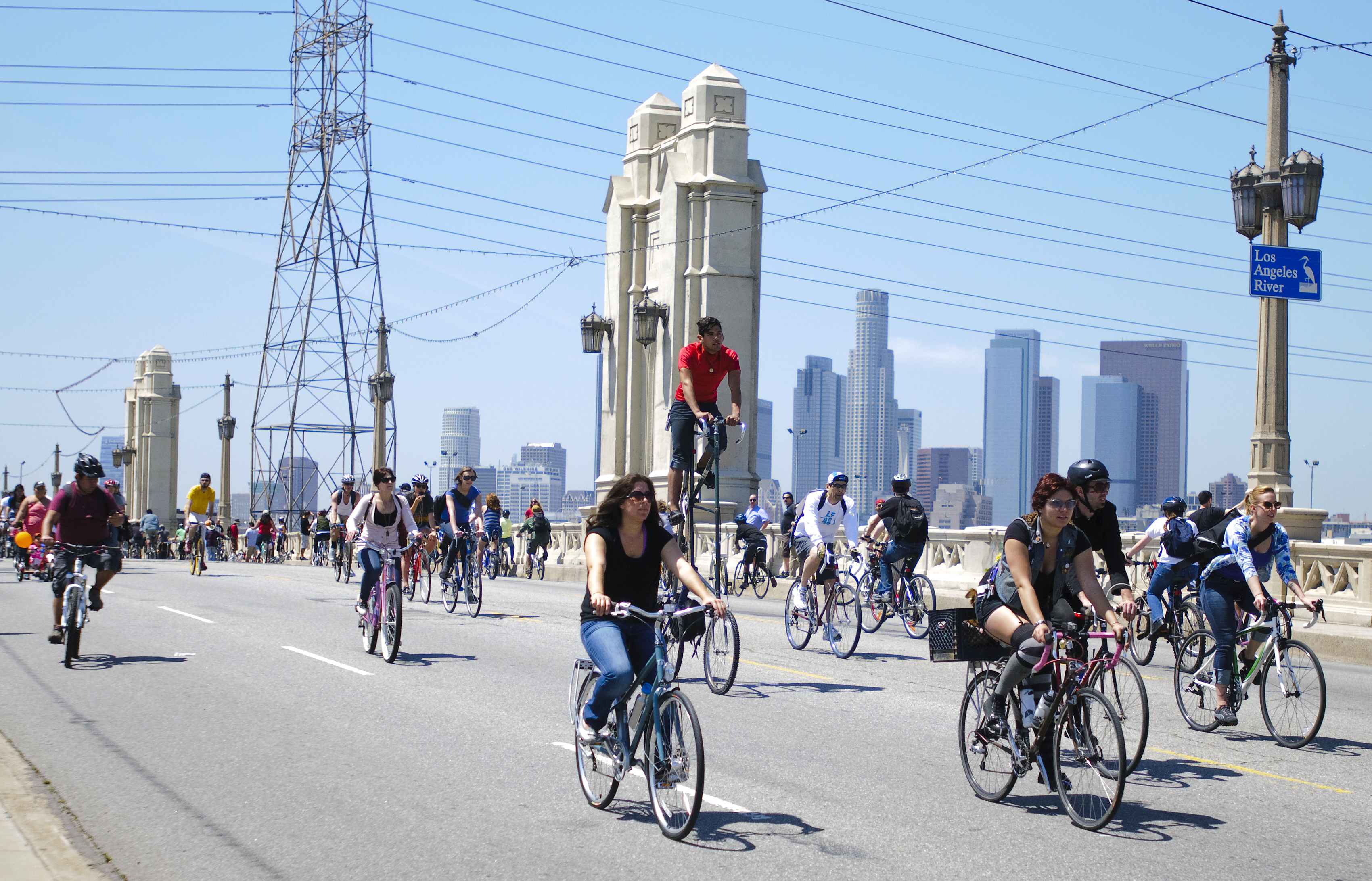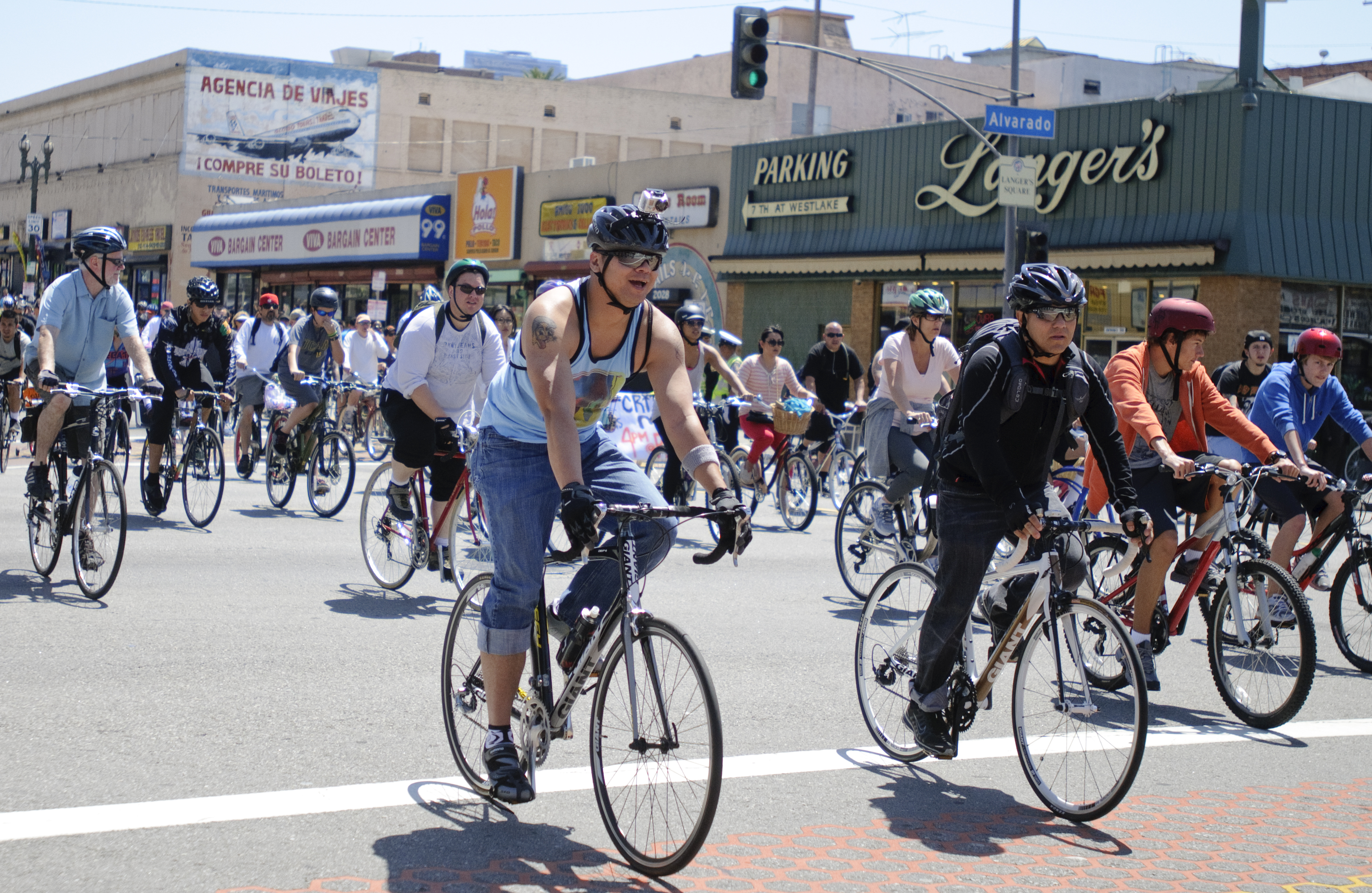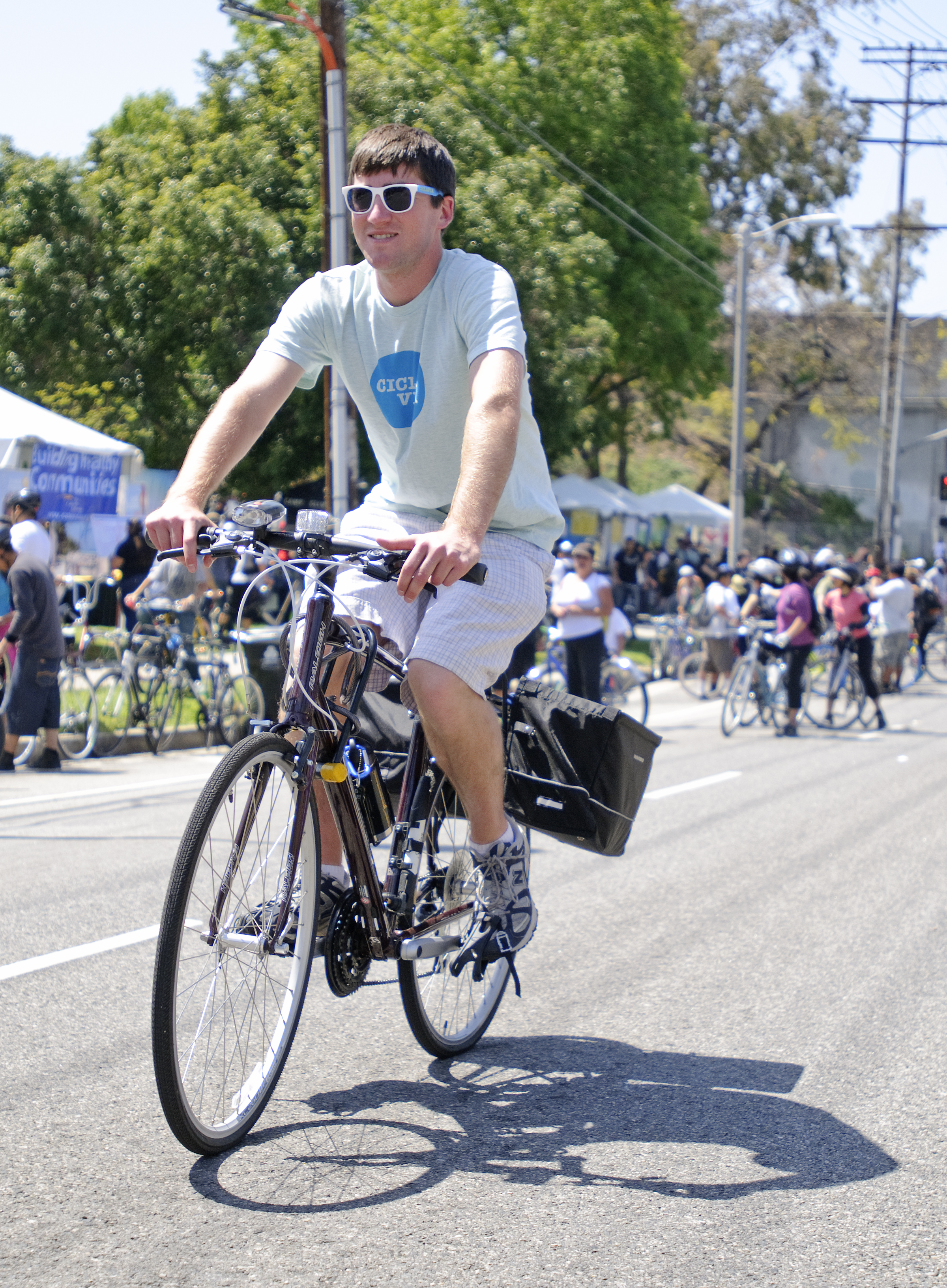
At top, cyclists ride across Alvarado Street in downtown Los Angeles during Sunday’s CicLAvia event. Below, cyclists ride over the 4th Street bridge toward East Los Angeles.

Correction: The original version of this article contained an error. Ryan Johnson was compensated for his work at the most recent CicLAvia event.
Walking his bike along 4th Street near Hollenbeck Park in East Los Angeles, Ryan Johnson paused to pick up metal scraps in the road. He tossed a screw and a flattened metal rod into the panniers saddled on the back of his black bike.
He wanted to prevent cyclists from puncturing their tires.
It was part of his work for the CicLAvia event on Sunday, which closed off 10 miles of city streets stretching from East Los Angeles to the northern part of the city for cyclists and walkers to enjoy without having to worry about cars passing by.
Johnson was responsible for watching over the tail end segment of the CicLAvia route, between the intersection of St. Louis and 4th Street and the bridge passing over the Los Angeles River. A park there served as a resting point for hundreds of cyclists and an occasional rollerblader. Nearby, people ranging from small children on tricycles to adults fitted with professional racing bikes laughed and talked as they pedaled down streets ordinarily packed with cars.
Sunday was the fourth time CicLAvia has been held, and Johnson, an urban planning graduate student, has been involved in planning the event since the summer before it was first held in October 2010. He was part of the original team of urban planners, department of transportation representatives and engineers who organized the event.
At this time, Johnson is conducting the only formal research on CicLAvia, with long-term hopes of aiding in transportation planning. During the third CicLAvia event in October 2011, Johnson surveyed about 300 participants to study differences between returning and new participants. The survey is aimed at showing the impact of CicLAvia over time, Johnson said.
He also traveled to Guadalajara, Mexico to study Recreativa, Guadalajara’s version of CicLAvia which takes place every Sunday. Now, Johnson gives recommendations for improving CicLAvia and said he hopes his research can ultimately recommend planning and transportation policy changes in the city.
To put on Sunday’s event, Johnson worked with the event production staff of the non-profit Community Arts Resources, the company behind CicLAvia that organizes cultural events in the city to connect communities in public spaces.
“We want to see tangible change and (the research) is our proof,” said Aaron Paley, president and founder of Community Arts Resources.
Paley said he expects to see more research done in the future, but he is glad a UCLA student is leading the initiative.
“You’re going to see a lot more of this coming and he’s going to be on the forefront because he was the first one to do it,” Paley said.
Another staff member, Gigi Davis, who worked the activity hub stationed at Hollenbeck Park on Sunday, has known Johnson since 2010, when they met volunteering for a non-profit organization.
She said he believes in the idea of building community through bicycling ““ as an individual, he is an open-hearted, neighborly sort of person, she said.
When Johnson moved to Los Angeles from Mississippi to study urban planning at UCLA, he explored Los Angeles on weekends by car first and then by bike.
He biked for hours.
Johnson realized he could get around the city without a car, and he enjoyed the view from atop a bike seat.
“You get to see much different things when you’re going slow,” Johnson said.
Before moving out to Los Angeles, Johnson worked in a political consulting company. After spending some time in the political consulting company he became bored with the detached type of work he was doing there.
He said he wanted to impact people directly and work with them to identify problematic issues and help find solutions to them.
In Los Angeles, he saw opportunities. The city needs to encourage more people to ride bikes, but also needs more infrastructure to make biking safer, Johnson said.
In his neighborhood in Northeast Los Angeles, Johnson noticed that biking as a means of transportation was not mainstream. He saw people biking for fun, but not to school and work.
With events like CicLAvia and group rides throughout the city, Johnson said he hopes to convince people that Los Angeles can be a city safe for bicyclists.
“(Participants) realize it can be safe under the right conditions,” he said.
